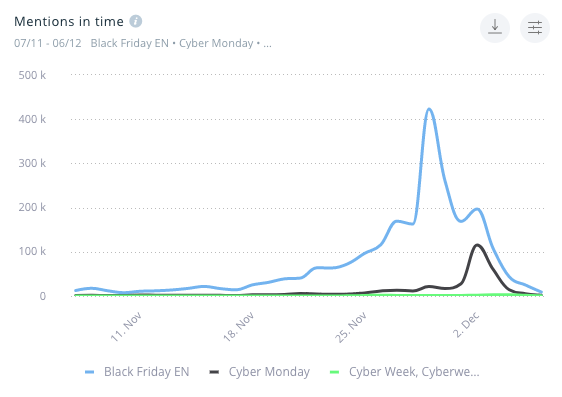Black Friday 2019 – the winners and the losers
Now that the dust has settled after this years’ Black Friday, we thought it would be a good time to take a look at how the retail event compared to previous years. Although precise numbers are still coming in, we can already tell that Black Friday 2019 set new records – again!
Online is king – again!
Online shopping once again became the dominant sales channel. Black Friday and Cyber Monday sales amounted to $7.4 billion and $9.2 billion, respectively, according to a report published by Adobe Analytics. Cyber Monday 2019 also became the first time in history when customers spent over $3 billion through their smartphones alone!
Physical spending is on the way out
Sales at physical locations continue to decline as more and more customers decide limited supplies and large crowds are simply not worth it. Although the decline isn’t as pronounced as the staggering increases in online shopping, the trend does not show any signs of slowing down.
However, a new phenomenon was observed: a marked increase in in-store pickups of online orders. Consumers are still willing to make purchases in brick-and-mortar stores, it seems, but only if they know the items they’re interested in are available.
It’s all about mobile!
According to data from the Adobe Analytics report, those retailers who offered strong mobile storefronts raked in the most cash from sales. That’s not very surprising – after all, can you name a more convenient way to shop? The last several years have shifted the web more and more towards the mobile experience. Some retailers embraced mobile users fully, while others are lagging behind; the revenue difference between these two groups leads to a very simple conclusion. Mobile customers make up one of the largest customer demographics out there.
Black Friday is slowly eroding
Although Black Friday will never lose relevance – taking place a day after one of the largest American holidays will do that to you – many retailers are actually shifting their focus to the following week, saving the best deals for Cyber Monday and Cyber Week instead.
Amazon, in particular, has been attempting to leverage its market position to establish a second retail season well away from Thanksgiving. It’s annual Prime Day event boasts even better deals and discounts than the ones on offer during Black Friday. Where goes Amazon, of course, also goes a legion of smaller companies; Prime Week, or “Black Friday in July” hasn’t yet eclipsed the real deal, although it can’t be far off.
That trend isn’t yet reflected in social media data, however; Black Friday still dwarfs Cyber Monday when it comes to online mentions, being a relevant term well into Cyber Week. Cyber Monday only peaks, well, during Cyber Monday itself. Cyber Week, despite being a fairly established phenomenon, remains rarely talked about.

Double-check your deals!
Perhaps no story was more discussed last week than what happened to Foreo during their ill-fated Black Friday sale. Due to a mistake, one of their high-demand products, the UFO, was marked down from $279 to just $9 – a 96% discount. Naturally, word spread like wildfire. It took two hours for the news to reach the entire social web, which generated enough traffic to knock Foreo’s servers offline. During that time, the company sold just shy of 39,000 devices.
Despite losing an approximate $10,000,000, Foreo has kept their chin up about the entire affair – they have announced that they plan to honour all of the purchases made while the glitch was online.
Ultimately, the mistake was determined to be a simple human error; had someone checked the deal twice, the entire story could have been avoided.
Black Friday goes international
Although Black Friday started out as a strictly American event – it always follows Thanksgiving, after all – the spread of the Internet and the increased globalisation of commerce made it a worldwide phenomenon.
Although Black Friday is still mostly prevalent in English-speaking countries, who make up 64 percent of all mentions tracked by SentiOne, other markets also express significant interest in the event. The largest of these is France, responsible for 7% of all global mentions of Black Friday, followed by Germany, coming in third at 6.83%.

Conclusion
- Focus on mobile users
- Offer in-store pickup of online purchases to drive foot traffic
- Extend your promotions past Black Friday
- Double-check your deals
- Make your deals available to international clients as well
Black Friday is still holding strong, although it is changing into a different sort of holiday. The days of huge crowds storming malls are seemingly coming to a close, while online retail keeps growing stronger than ever.
The overall volume of sales keeps growing, as well – that means more work for your customer service department. Never before has customer service automation been so important; as luck would have it, though, we happen to know a thing or two about it. If you’re wondering about the benefits, procedures, and proper principles, take a look at our Customer Service Automation guide!



